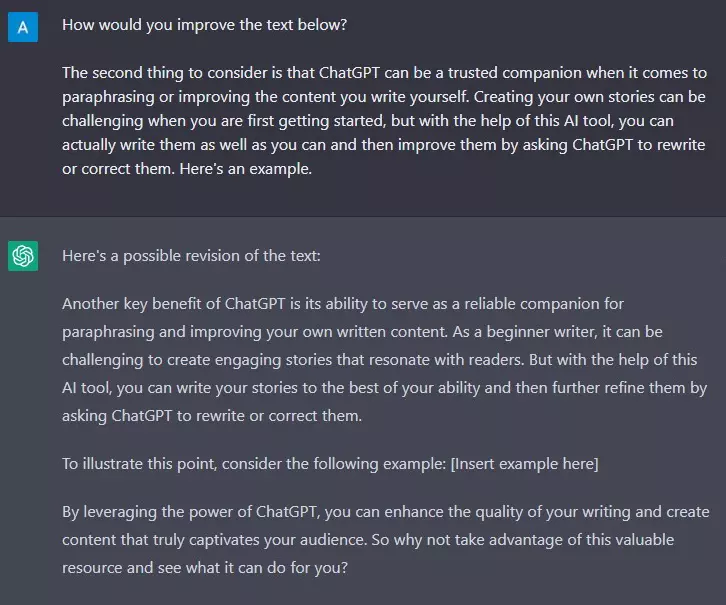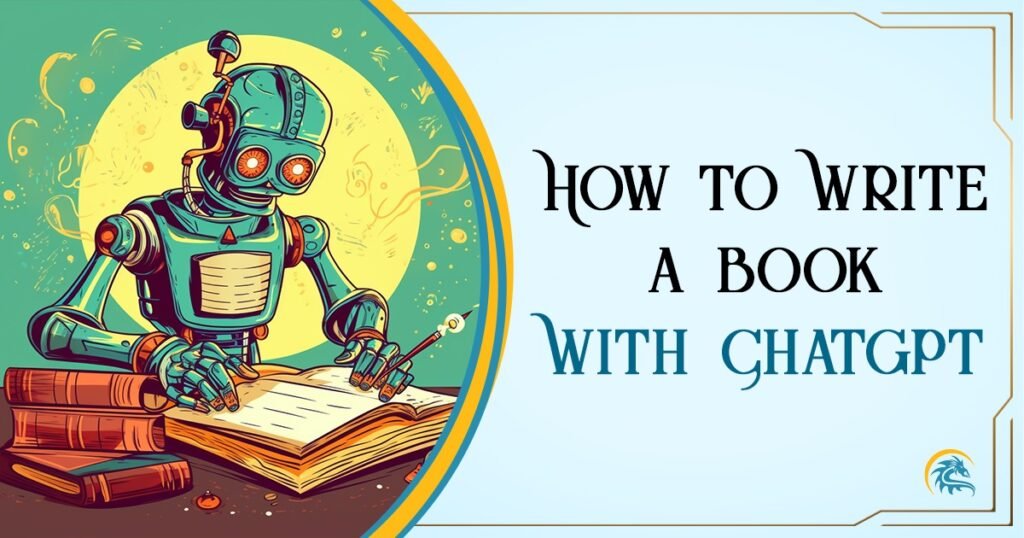How To Write A Book With ChatGPT

Imagine sitting down at your computer, full of excitement and ready to embark on the journey of writing your very own book. But where do you begin? Introducing ChatGPT, a powerful tool designed to assist you in your writing process. In this article, we will explore how ChatGPT can be your creative companion, providing guidance and inspiration as you navigate the intricate world of storytelling. With ChatGPT as your virtual writing partner, you will discover the endless possibilities and newfound confidence to bring your book to life. So, let’s dive in and uncover the secrets of writing a book with ChatGPT!

This image is property of basmo.app.
Choosing a Topic
Identify your interests
When embarking on the journey of writing a book, it’s crucial to choose a topic that resonates with you. Consider your passions, hobbies, or areas of expertise. Writing about something you genuinely enjoy will not only make the process more enjoyable but will also allow your enthusiasm to shine through in your writing.
Research popular book genres
To ensure your book will appeal to a wide range of readers, it’s essential to research popular book genres. Explore various genres such as mystery, romance, science fiction, fantasy, or biography. Familiarize yourself with the characteristics, conventions, and expectations of each genre to understand which one aligns best with your interests and writing style.
Consider your target audience
While it’s important to choose a topic that interests you, it’s equally crucial to consider your target audience. Determine the age range, demographics, and reading preferences of your potential readers. Tailor your topic to cater to their interests and desires. Understanding your target audience will help you create a book that resonates with them and ensures a greater chance of success.
Brainstorm ideas
Once you have identified your interests and explored different genres, it’s time to let your creativity flow and brainstorm ideas. Consider intriguing concepts, unique perspectives, or captivating settings that align with your chosen genre and target audience. Jot down all your ideas, no matter how wild or unconventional, as they can spark the foundation for your book’s plot and characters.
Creating an Outline
Define the main plot points
Before diving into the writing process, it’s beneficial to define the main plot points of your book. Think about the major events, conflicts, and resolutions that will shape the narrative. These plot points will serve as a roadmap for your writing journey, keeping you focused and ensuring a coherent storyline.
Develop the characters
Compelling characters are the backbone of any engaging story. Take time to develop your characters by considering their backgrounds, motivations, and aspirations. Craft well-rounded and relatable characters that readers can connect with and root for throughout the book.
Outline the chapters
Breaking down your story into chapters helps create structure and ensures a smooth flow. Outline the key events or milestones that will take place in each chapter, allowing for a gradual progression of the plot. Consider the pacing and balance of action, dialogue, and character development to maintain reader engagement.
Establish the story structure
In addition to chapter outlines, it’s essential to establish the overall structure of your story. Decide on the beginning, middle, and end of your book, ensuring a clear and cohesive narrative arc. Think about how the main plot points will unfold and how subplots or character arcs can enhance the overall story structure.

This image is property of i.ytimg.com.
Getting Started with ChatGPT
Accessing OpenAI’s ChatGPT
To leverage the powerful capabilities of ChatGPT in your writing process, you can access OpenAI’s ChatGPT by visiting their platform. Take advantage of the prompts and responses generated by the AI model to enhance your storytelling and overcome writer’s block.
Understanding the model’s capabilities
Familiarize yourself with the capabilities and limitations of ChatGPT. While the model can provide creative prompts and ideas, it’s important to remember that it’s an AI language model and the generated content may require fine-tuning or editing. Use ChatGPT as a tool to inspire and assist you in the writing process rather than relying solely on its suggestions.
Preparing the input prompts
To effectively utilize ChatGPT, prepare well-crafted input prompts. Clearly communicate your queries or prompts to the model, ensuring specific and detailed instructions. The more precise the prompts, the more relevant and useful the generated responses will be. Experiment with different types of prompts to explore various aspects of your story.
Generating Story Ideas
Using ChatGPT as an idea generator
Tap into the power of ChatGPT to generate unique story ideas. Engage in conversations with the model, posing questions or scenarios related to your book’s topic. Let ChatGPT spark your imagination by offering unexpected twists, alternative viewpoints, or fascinating premises. Take note of the generated ideas that resonate with you and incorporate them into your story.
Exploring different story directions
ChatGPT can assist you in exploring different story directions. Initiate conversations that delve into alternative paths or possibilities for your plot. Discuss potential choices, conflicts, or outcomes with the AI model, allowing it to provide fresh perspectives that can enrich your storytelling. Use ChatGPT to challenge your own ideas and stretch the boundaries of your imagination.
Consulting with ChatGPT for plot twists
One of the most exciting aspects of storytelling is unexpected plot twists. Engage ChatGPT in discussions about potential twists or surprises that can captivate your readers. The AI model’s unique insights can help you develop surprising turns in your narrative that keep readers invested and turning the pages. Don’t be afraid to experiment and push your story in unexpected directions with the guidance of ChatGPT.

This image is property of basmo.app.
Building the Story
Conversing with ChatGPT as a co-author
Think of ChatGPT as your co-author throughout the writing process. Engage in conversations, seeking its input on character development, dialogue, or world-building. Embrace the dynamic exchange of ideas, allowing the AI model to contribute suggestions or details that enhance your storytelling.
Expanding on ideas and scenes
ChatGPT can assist you in expanding on your ideas and scenes. If you have a particular concept or scene in mind, discuss it with the AI model to dig deeper and explore additional dimensions. Pose questions about the environment, emotions, or character interactions, and leverage the AI’s responses to enrich your descriptions and add depth to your writing.
Developing rich dialogues
Dialogue is a vital element of storytelling, and ChatGPT can help you craft engaging and authentic conversations. Engage in discussions with the AI model to test and refine your dialogues, seeking feedback on the dynamics, tone, or even speech patterns of your characters. Use this collaborative approach to create compelling conversations that bring your characters to life.
Maintaining Consistency
Establishing and updating story rules
To maintain consistency throughout your book, establish and update story rules. These can include world-building details, character traits, or plot guidelines. Engage in conversations with ChatGPT to discuss and solidify these rules, ensuring that the AI model aligns with your vision and doesn’t unintentionally introduce inconsistencies.
Revisiting earlier chapters for coherence
As the story progresses, it’s important to revisit earlier chapters to ensure coherence. Engage ChatGPT in discussions about previous events, plot threads, or character arcs to ensure consistency with the narrative. By discussing past chapters, you can identify any discrepancies or gaps and fine-tune your story for a seamless reading experience.

This image is property of nerdynovelist.com.
Refining the Draft
Polishing the language and style
After generating content with ChatGPT, it’s time to refine and polish the language and style. Edit the content generated by the AI model to ensure it aligns with your preferred writing style, tone, and voice. Pay attention to grammar, punctuation, and clarity to create a polished manuscript that captivates readers.
Identifying plot holes or inconsistencies
As with any writing process, there may be plot holes or inconsistencies in the story. Carefully review the draft, consulting with ChatGPT to identify any gaps or illogical elements. Discuss potential solutions or explanations with the AI model to address these issues and create a cohesive narrative that stands up to scrutiny.
Editing the generated content
ChatGPT provides valuable content, but it may require some editing for clarity or relevance. Evaluate the generated text, modifying or expanding upon it as necessary. Seamlessly merge the AI-generated content with your own writing, creating a cohesive storytelling experience that seamlessly integrates the assistance of ChatGPT.
Incorporating Feedback
Seeking input from beta readers or editors
To enhance your manuscript’s quality, seek input from beta readers or professional editors. Share your work with trusted individuals who can provide valuable feedback and suggestions. Discuss the feedback with ChatGPT, seeking the AI model’s input on how to incorporate constructive suggestions into your writing.
Evaluating and implementing suggestions
Evaluate the feedback received and weigh the suggestions carefully. Engage in conversations with ChatGPT to discuss and understand potential improvements or areas of concern. Leverage the AI model’s insights to consider alternative approaches, refine your story, and ultimately make well-informed decisions that enhance the overall quality of your book.

This image is property of i.ytimg.com.
Adding Personal Touch
Introduce unique ideas and perspectives
Writing a book with ChatGPT doesn’t mean sacrificing your unique ideas and perspectives. Use the AI model as a tool to further develop and refine your original concepts. Incorporate your own unique insights, experiences, and creativity into the narrative, ensuring your book stands out and represents your voice as an author.
Weaving in personal experiences or anecdotes
Drawing from personal experiences or anecdotes can add authenticity and depth to your writing. Discuss these experiences with ChatGPT to explore how they can be seamlessly woven into the story. Engage the AI model in conversations about specific emotions, sensations, or details surrounding your experiences, allowing it to inspire and shape your narrative.
Injecting creativity into the narrative
Utilize ChatGPT’s creative potential to inject fresh ideas and imaginative elements into your book. Engage in discussions that stretch your imagination and encourage unconventional thinking. Allow the AI model to provide prompts or suggestions that prompt you to explore new avenues of storytelling, creating an engaging and innovative narrative.
Completing the Manuscript
Reviewing and revising the entire book
Once you have completed the initial draft, it’s time to review and revise the entire book. Read through the manuscript, evaluating the pacing, characterization, and overall coherence. Engage ChatGPT in conversations about the book as a whole, seeking insights or suggestions on how to enhance the final version.
Ensuring a satisfying conclusion
A satisfying conclusion is essential to leave a lasting impression on readers. Discuss your book’s ending with ChatGPT, exploring different possibilities and approaches. Seek the AI model’s input on the resolution of conflicts, character arcs, or lingering questions. Leverage the model’s suggestions and your own creative instincts to craft a conclusion that leaves readers satisfied.
Preparing the final manuscript
With the revisions complete, it’s time to prepare the final manuscript. Ensure proper formatting, proofread meticulously, and engage in conversations with ChatGPT to refine and perfect any final details. Polish your work until it reaches a professional standard suitable for submission or publication.
Writing a book with the assistance of ChatGPT can be an exciting and collaborative experience. By following these steps and engaging in meaningful conversations with the AI model, you can create a well-structured, captivating, and unique book that showcases your talents as an author. Embrace the possibilities that ChatGPT offers and embark on a writing journey filled with creative exploration and insightful assistance. Happy writing!
